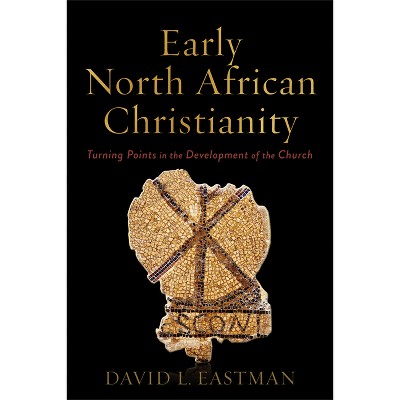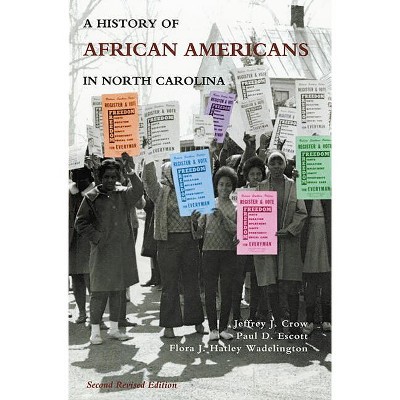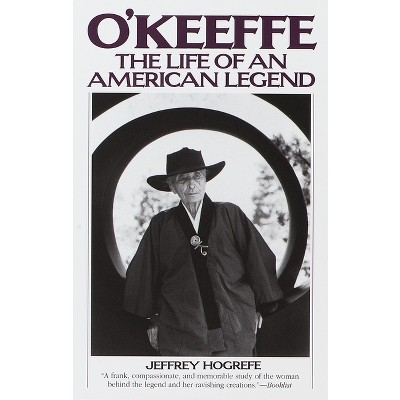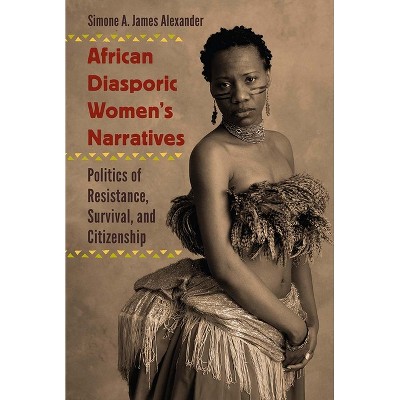In Search of African American Space - by Jeffrey Hogrefe & Carrie Eastman & Scott Ruff & Ashley Simone (Paperback)

About this item
Highlights
- Drawing on architecture, performance art, history and visual theory, In Search of African American Space explores the creative relationship between the African diaspora and social space in America Richly illustrated with vintage adverts, maps, posters and architectural plans, and organized thematically, this anthology, edited by Jeffrey Hogrefe and Scott Ruff at the Pratt Institute in New York, is divided into three sections.
- Author(s): Jeffrey Hogrefe & Carrie Eastman & Scott Ruff & Ashley Simone
- 256 Pages
- Architecture, Criticism
Description
Book Synopsis
Drawing on architecture, performance art, history and visual theory, In Search of African American Space explores the creative relationship between the African diaspora and social space in America
Richly illustrated with vintage adverts, maps, posters and architectural plans, and organized thematically, this anthology, edited by Jeffrey Hogrefe and Scott Ruff at the Pratt Institute in New York, is divided into three sections. The anthology is organized thematically, presenting African American space in a broad cultural context. The section "The Monument, Memorial, and Mundane," explores the analytical methods of architects Scott Ruff, Yolande Daniels, Rodney Leon, Elizabeth Kennedy, Sara Caples and Everardo Jefferson, who have dedicated their studies and practices to examining spatial typologies related to the African diaspora. As architects working directly in the afterlife of slavery, conscious of spatial performances of opposition in relationship to architecture, they introduce their own interpretations of African American space from their personal experiences and a dedication to an aspect of practice that has been operating largely outside of the academy.
The section "Politics without a Proper Locus" contextualizes the development of African American space in everyday practices that arose in the antebellum period and beyond, among enslaved persons on plantations and the growing population of freed Africans in urban settlements in the North and South. The section title derives from Saidiya Hartman's influential engagement with French theorist of space Henri Lefebvre in the classic 1997 book Scenes of Subjection. The authors present the everyday practices of "vernacular citizenship," as characterized by Pratt Institute scholar Ann Holder, that emerged among the enslaved, the formerly enslaved and their allies in the years before and after Emancipation to cast a light on responses to the inevitable African American experience of hypervigilance. The oppositional performances of African Americans are at the foundation of a search for African American space--a space that is continually erased by the state apparatus.Review Quotes
With details of artistic and architectural responses to the perennial search for a meaningful space, as well as a huge number of historical illustrations, the book is essential reading for anyone wanting a deeper understanding of modern America.-- "Wallpaper*"
Examining issues of representation, the public performance of sociability, and the relationship between architecture and African American identity, the book reads as a poignant, necessary, and generous attempt to outline spaces that are defined by, but not limited to various axes of oppression.--Oluwatobiloba Ajayi "PIN-UP"
Explores the past, present and future of African American space as it relates to the history of slavery and its legacy in shaping the built world. Featuring a wide range of essays from historians and practitioners alike, the volume serves to reimagine inclusion and access in a Eurocentric discipline that has largely kept Black creatives on the margins-- "AZURE"
Told through architecture, performance art, history and visual theory, In Search of African American Space surveys the creative relationship between the African diaspora and social space in America. Arranged thematically, it establishes the context and history of African American space through vintage adverts, maps, posters, monuments, art projects and architectural plans.--Harriet Lloyd-Smith "Wallpaper*"
With the rise of Black Lives Matter Movement, there is no better time to explore the current African American architectural experience. 'What is African American space?' is the line opens the new book In Search of African American Space. With essays by academics whose work examines African American various themes in African American culture, as well as architects, this anthology comes to present a critical review of identities and memory behind social spaces in architecture, performance art, history, and visual theory.--Daniella Ohad "Daniella on Design"
Shipping details
Return details
Trending Art, Photography & Design Books











